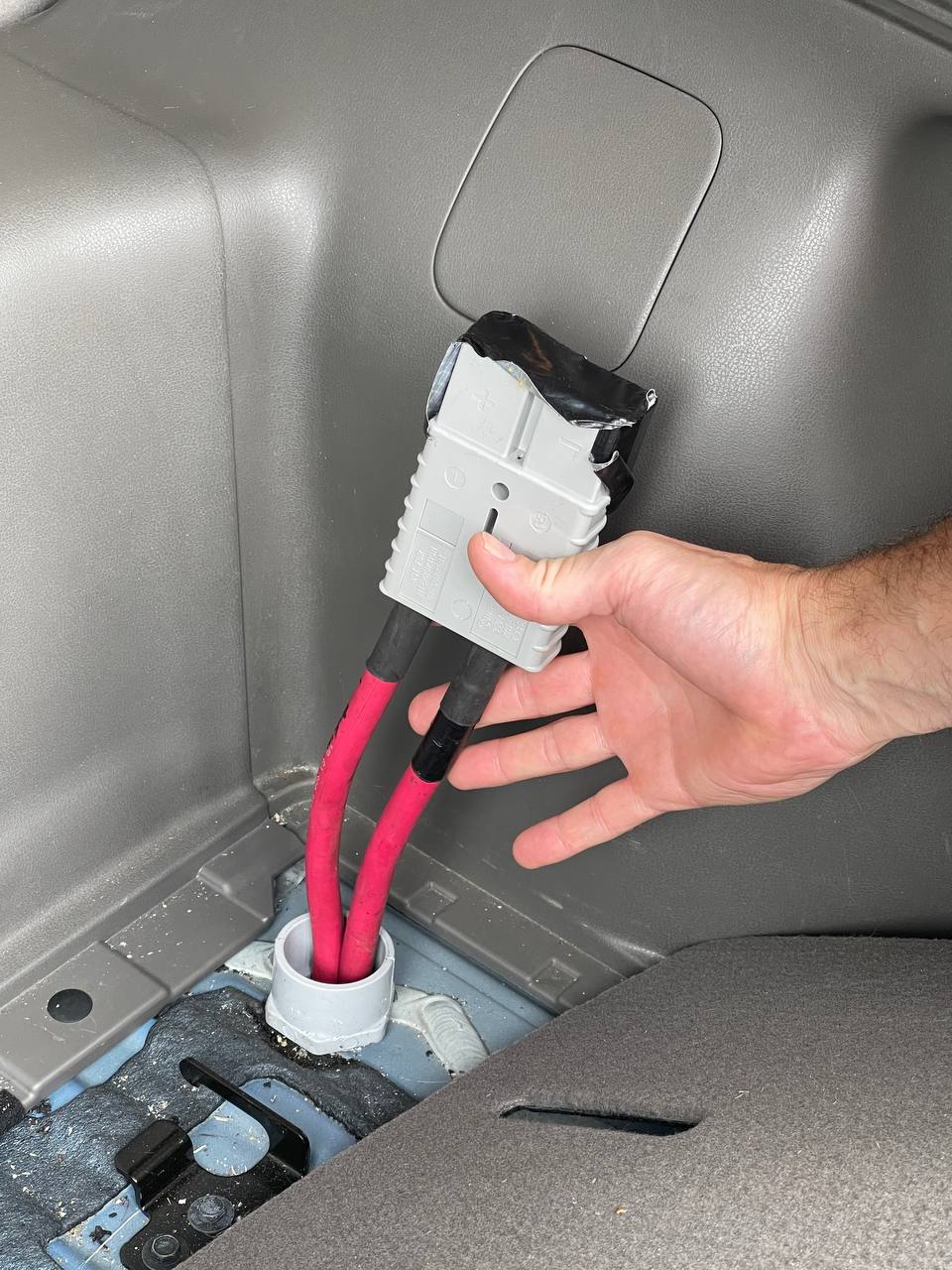Hello all, new Leaf owner here. I just bought a 2011, 36k miles, battery SOH about 52% with an extended battery hack. Please see the attached pict, but basically an anderson quick disconnect for an extra trunk battery. In my forum searching it appears there are a couple locations (ie after the shunt, inside the battery being the most desirable??) one could tie this into to, but since I can't really see how or where it was tied in without dropping the battery, is it possible to discern this via testing?
My limited understanding:
1 - Before the battery shunt only works to ~24kwh-ish, then since the car counts kWhs it says enough is enough, so tapping off here isn't much good.
2 - After the battery shunt the car can no longer count kWhs and will just keep going until a cell reaches min cut off voltage. (messes up the mile counter, but....)
3 - Tied in via the battery to inverter cabling, outside the battery, this would be a big no no correct?
Considering there is full pack voltage present when the car is off, that would indicate either 1 or 2 correct? This cabling is disconnected via the battery contractor when the vehicle is powered off?
I might not even utilize this connector, I just bought this thing to commute about 20 miles per day, then was going to repower a Crosley or something with the guts in the future. But in any case I'd like to further understand.
Thanks

My limited understanding:
1 - Before the battery shunt only works to ~24kwh-ish, then since the car counts kWhs it says enough is enough, so tapping off here isn't much good.
2 - After the battery shunt the car can no longer count kWhs and will just keep going until a cell reaches min cut off voltage. (messes up the mile counter, but....)
3 - Tied in via the battery to inverter cabling, outside the battery, this would be a big no no correct?
Considering there is full pack voltage present when the car is off, that would indicate either 1 or 2 correct? This cabling is disconnected via the battery contractor when the vehicle is powered off?
I might not even utilize this connector, I just bought this thing to commute about 20 miles per day, then was going to repower a Crosley or something with the guts in the future. But in any case I'd like to further understand.
Thanks

